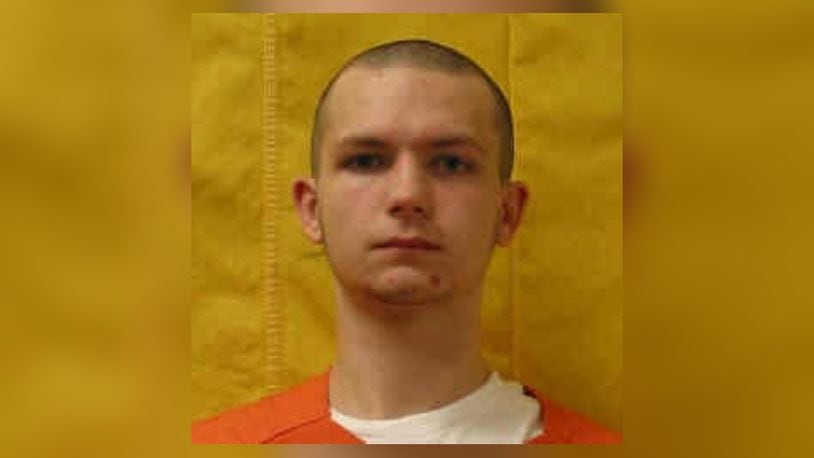Chief Justice Maureen O’Connor and Justice Terrence O’Donnell were the primary questioners of Timothy McKenna, the lawyer arguing for the life of Austin Myers, 22, of Clayton. The justices also questioned Warren County Prosecutor David Fornshell, who personally argued that Myers should be executed for the murder of Justin Back, 18, in January 2014.
McKenna argued for the high court to overturn Myers’ death sentence on a variety of grounds, including his youth — Myers was 18 at the time and the youngest facing the death penalty in Ohio — and the fact his co-defendant, Timothy Mosley, got life in prison without parole in exchange for his testimony against Myers.
MORE: Wife waives right to jury trial while husband faces death penalty
O’Donnell pointed out criminal law allowed for Myers to get a harsher sentence although he had a co-defendant who actually committed the murder. Back was stabbed 21 times on the floor during a struggle on the kitchen floor of his home.
“When one does one part, the other does another, both are equally guilty. You know that law,” O’Donnell said during an hour of oral arguments.
O’Donnell pointed out it was Myers who led Mosley to Back’s home outside Waynesville, a point in line with the prosecution’s position.
“They were equally culpable,” McKenna countered. “They should have the same penalty.”
O’Connor pointed out the long history of defendants who cooperate with prosecutors getting lighter sentences.
“It happens all the time,” she said.
MORE: Ohio Supreme Court justice boasts of bedding 50 women in defense of ‘all heterosexual males’
McKenna also accused investigators of reading Myers his Miranda rights “late in the game” and failing to provide him a lawyer during interrogation at the Clayton Police Department.
Justice Judith French pointed out Myers was told he was “free to go.”
“How much clearer do the officers need to be?” she asked.
Fornshell said Myers was read his rights and offered legal representation, and was not questioned by Clayton police about the case before the deputies arrived to interrogate Myers and Mosley in adjoining rooms at the Clayton Police Department.
When the deputies arrived, “he was sleeping in the back of a Clayton Police Department cruiser,” Fornshell said, since he was denied re-admittance to the Mosley home after initial questioning.
“Mr. Myers didn’t have a place to live,” Fornshell said, adding it was 15 degrees below zero on the night they were arrested after dumping the body in Preble County.
MORE: New death date set for man after execution halted
Fornshell listed cases in which the Ohio Supreme Court had affirmed death penalties for 18- and 19-year-olds and pointed out Myers was a year older than 18, the minimum age standard set for the death penalty in the state.
In response to questions from O’Donnell, Fornshell said there was no diagnosis of a mental condition and said defense lawyers intentionally decided against calling an expert to describe Myers’ mental condition.
“He could have called a mental health expert. He made the decision not to,” Fornshell said.
Fornshell also emphasized that Myers was the one who knew Back and knew that he had a safe at the home outside Waynesville.
In addition, Fornshell laid out a series of steps taken by Myers over two days leading to the killing.
Follow Lawrence Budd on Twitter
“Austin was more culpable,” he said, urging the high court to “impose the sentence of death.”
McKenna pointed to a notebook produced right before the trial as evidence Mosley was more involved in the planning than prosecutors portrayed and claimed that Myers’ lawyers erred in not calling a mental health expert.
“That expert could have swayed one juror,” he said.
The court typically issues opinions within six months, but it was unclear when a decision would be issued in this case.
About the Author
